|
|
|

Model is handcrafted from hard wood
with clinker build method, the inside is constructed just like the original boat.
Model comes with two pair of oars and a base like shown photos. |
|
 |
|
Item Code |
Specifications |
Packing
Volume |
|
FB0059P |
60L x 20W x
14H (cm)
|
23.62L x 8W x 5.5H (inch) |
0.027m³ = 0.95ft³ |
|
|
|
|
|
|
|
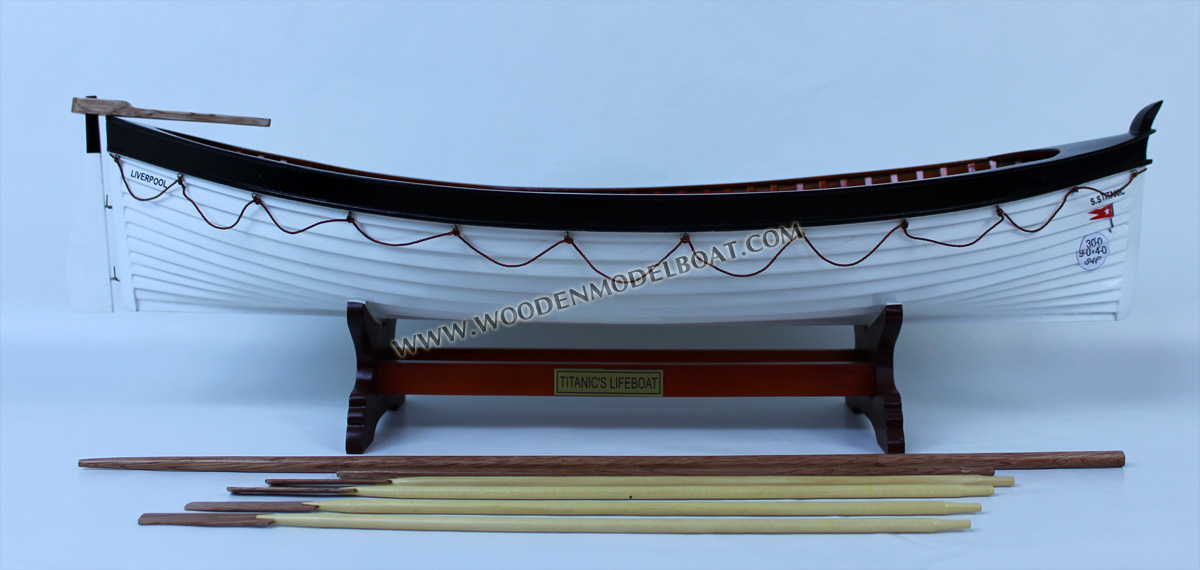
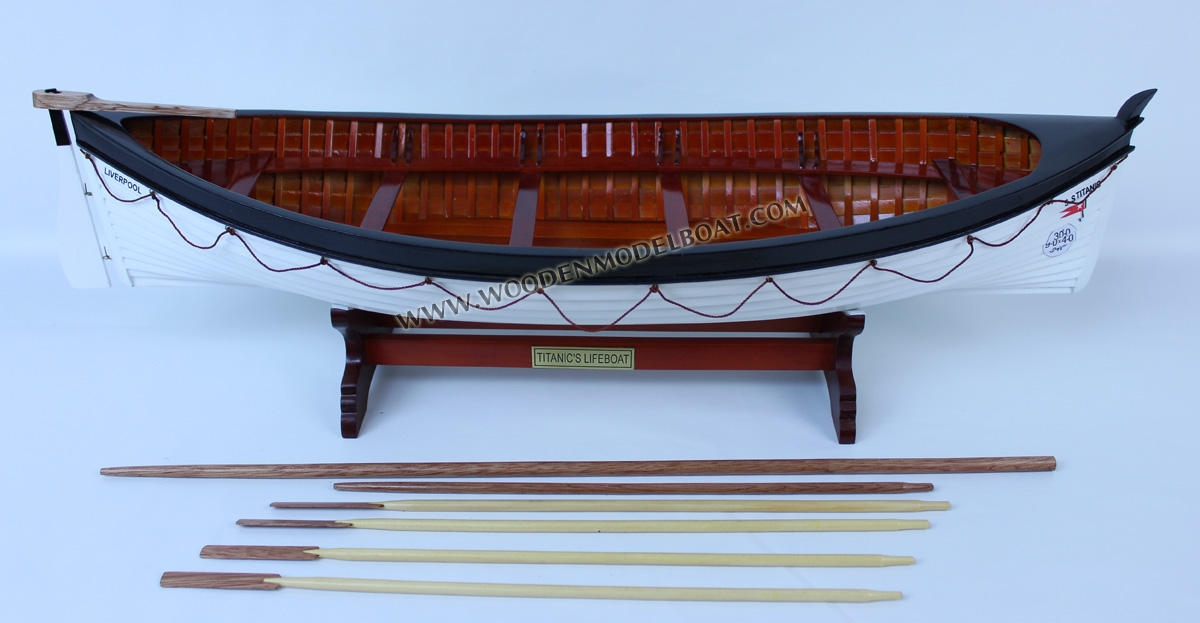
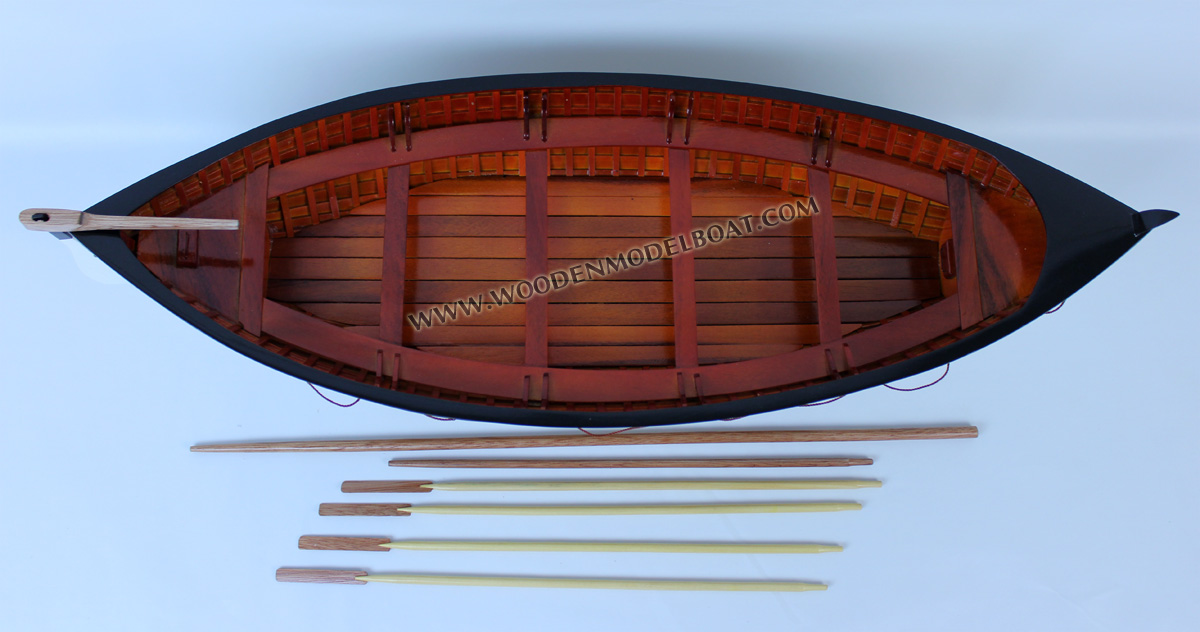
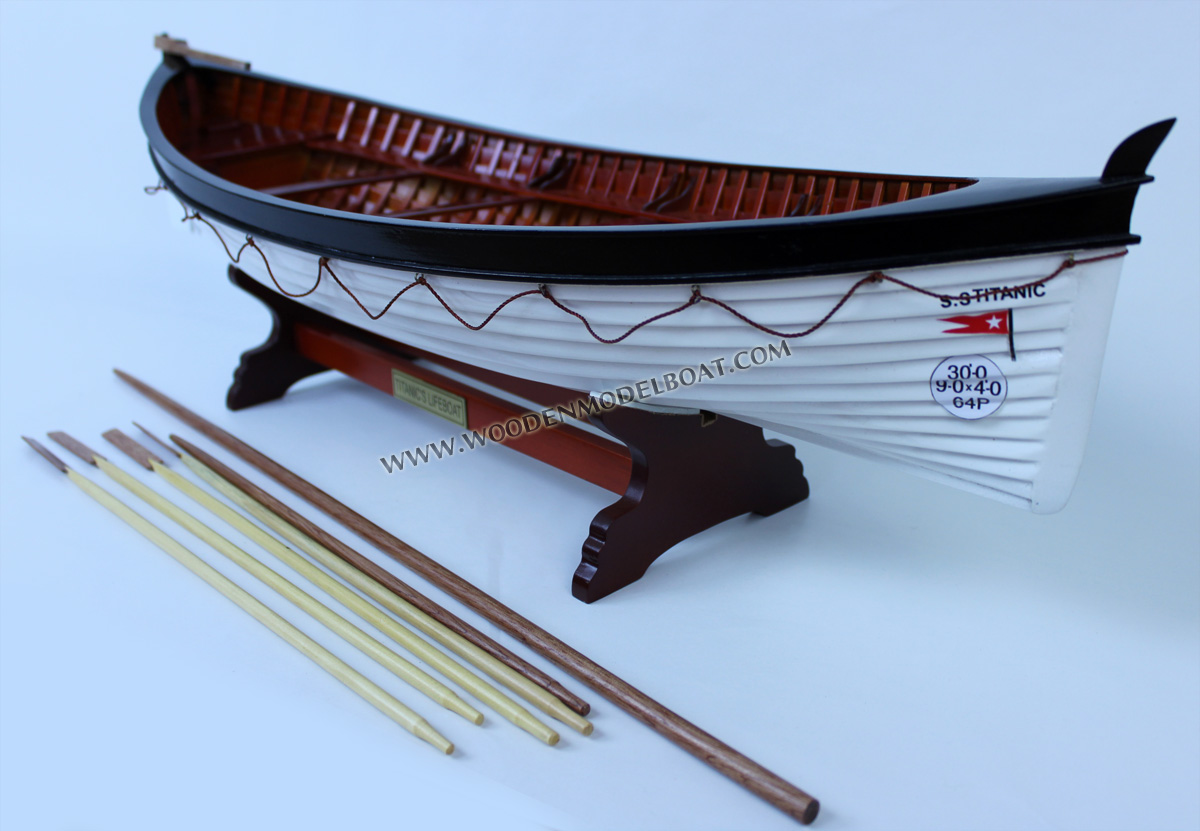
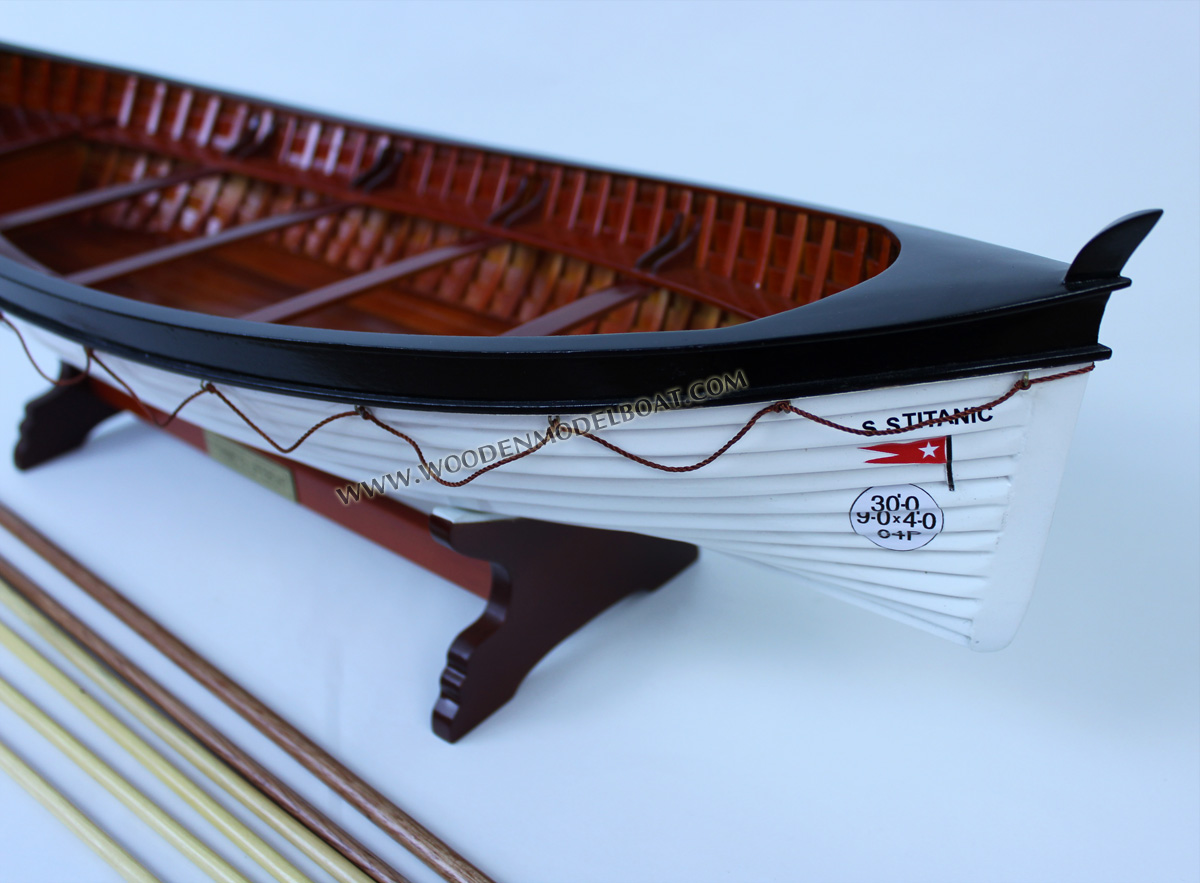
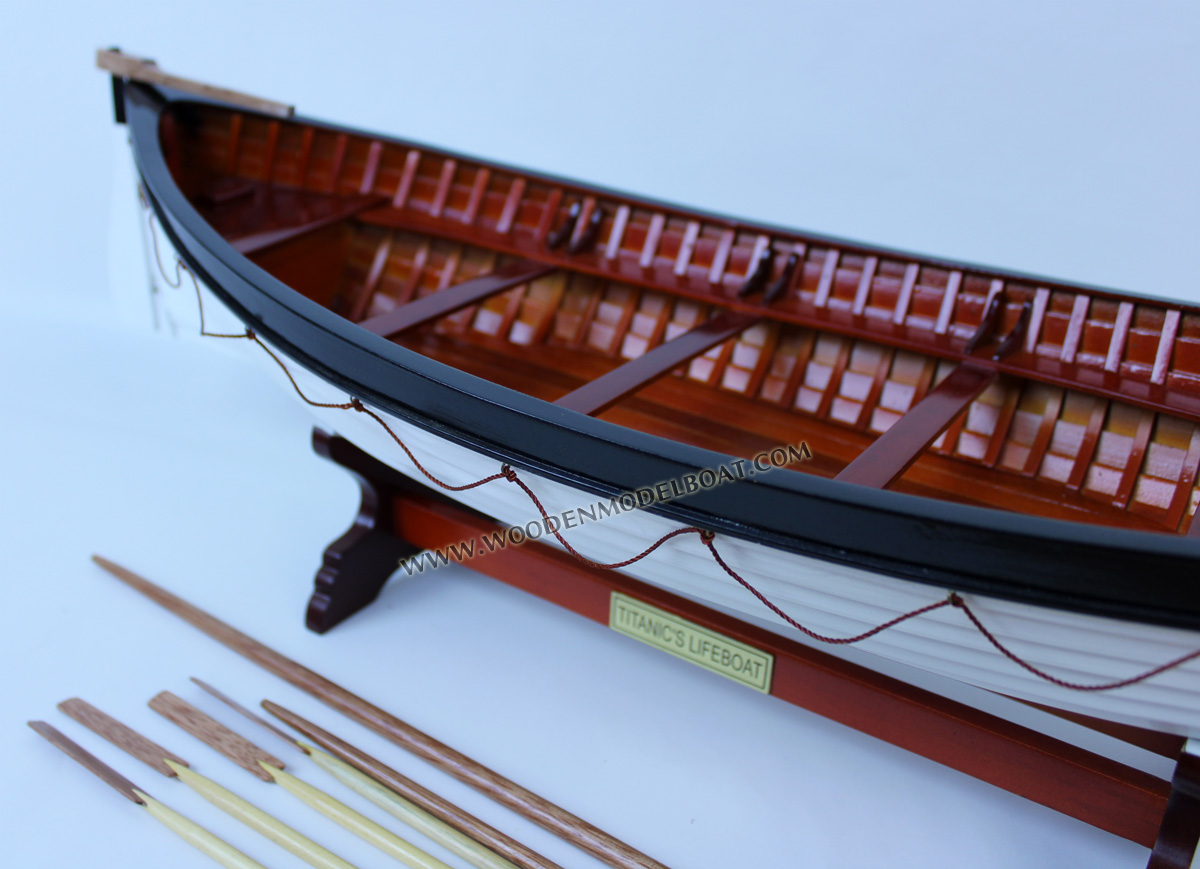
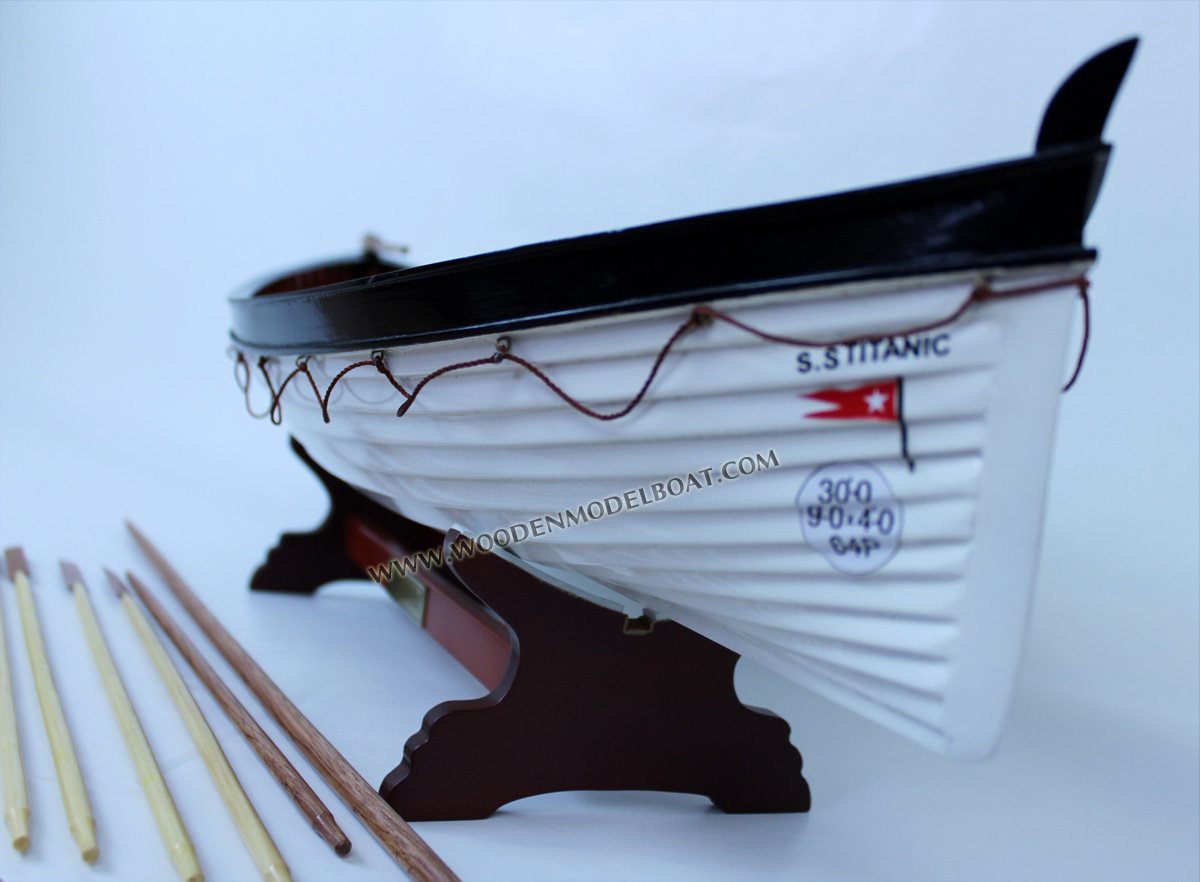
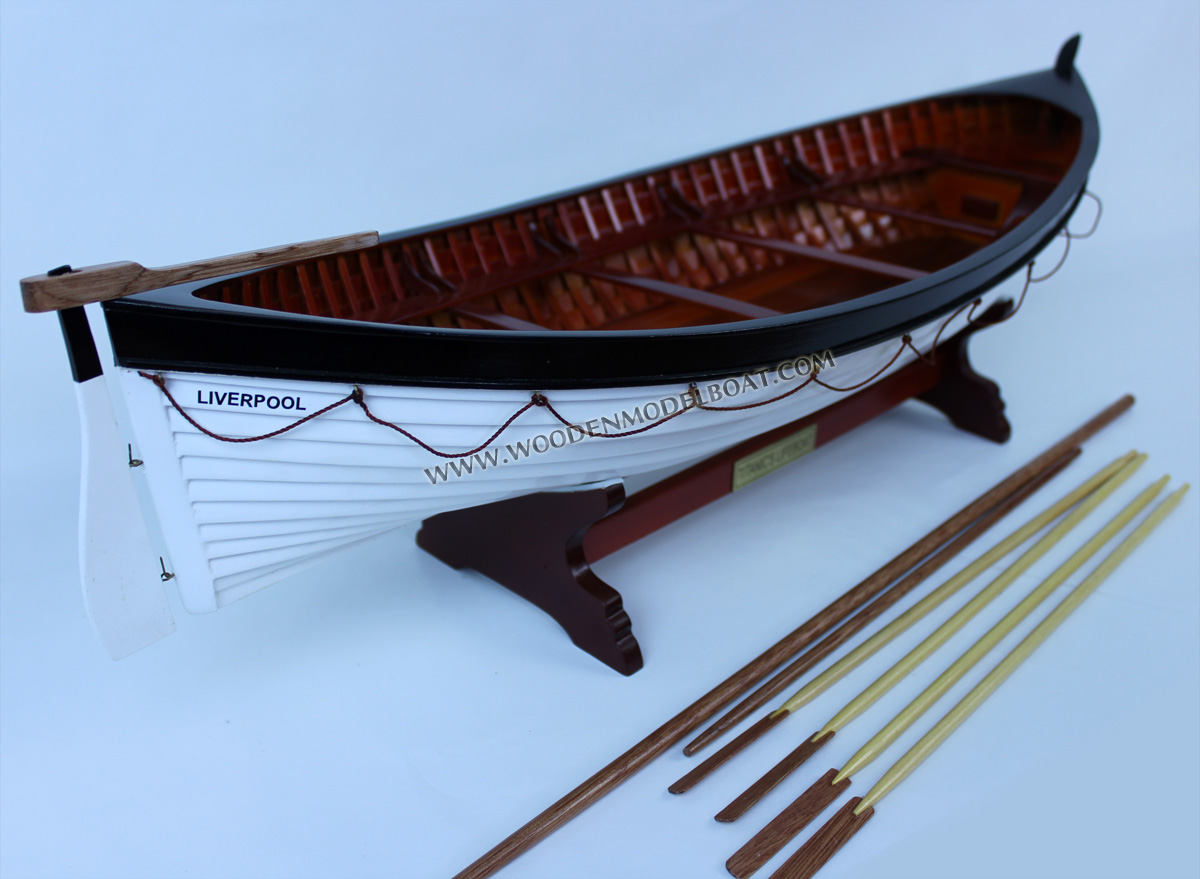
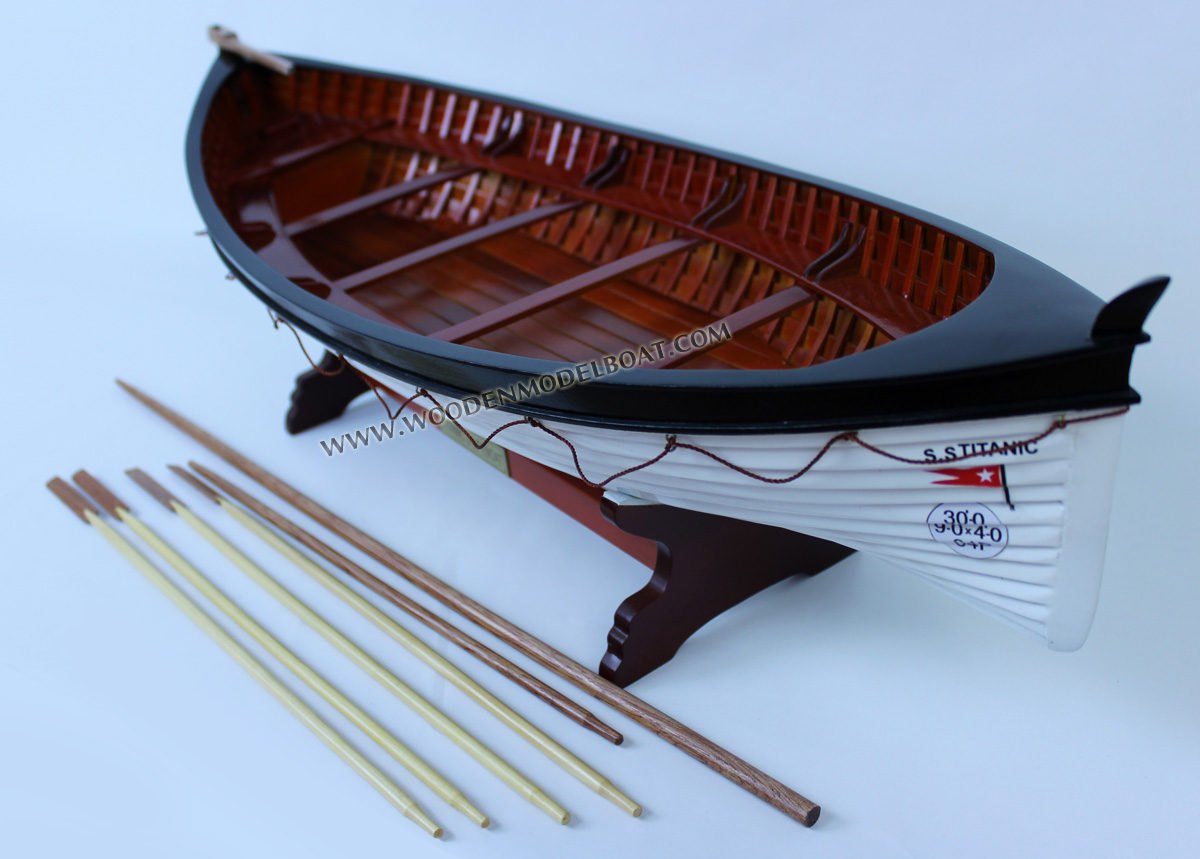
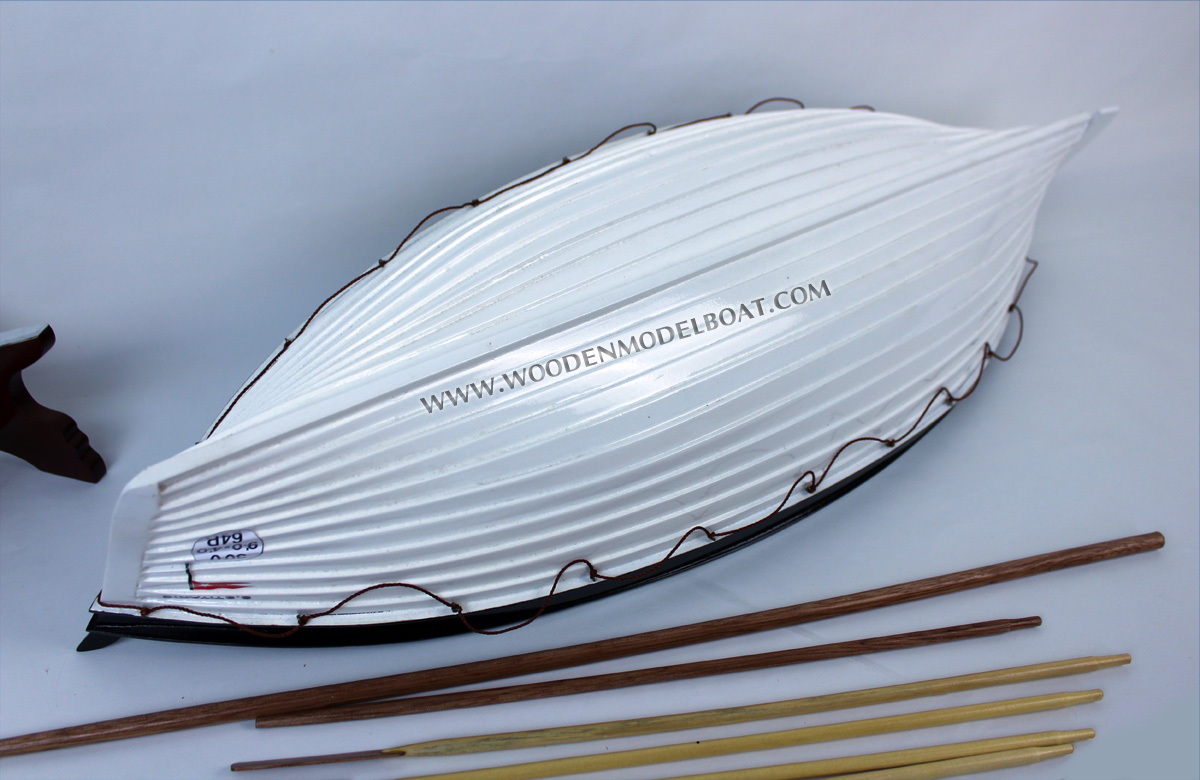
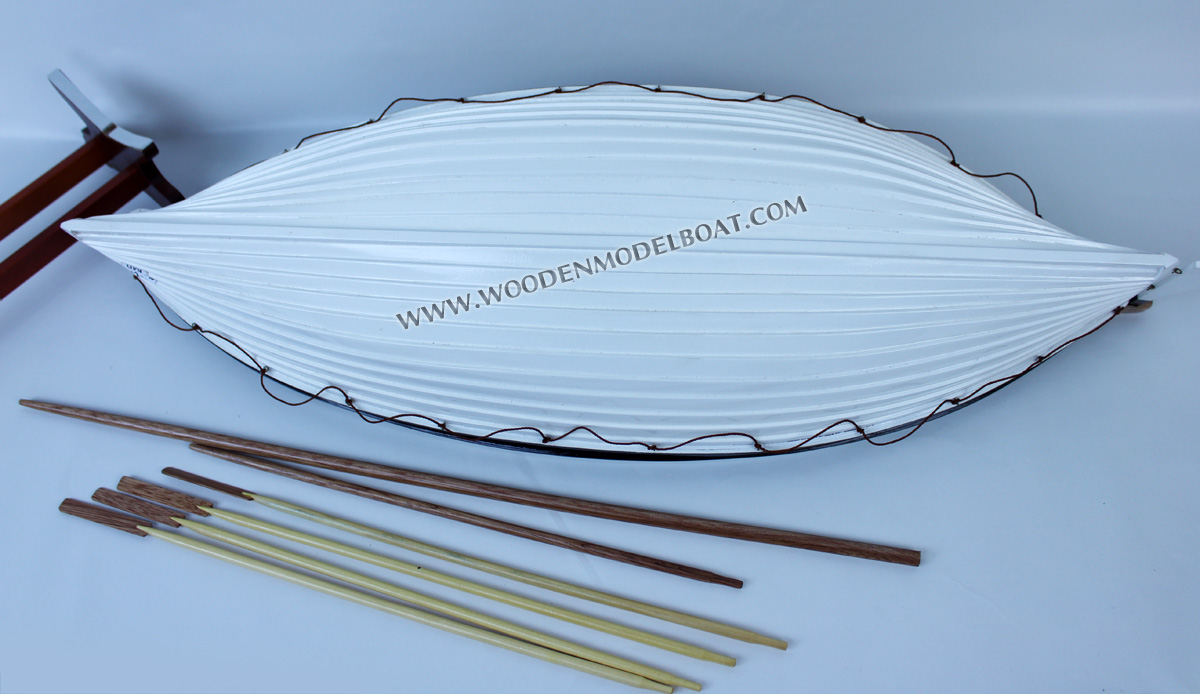 |
|
|
.
|
HISTORY
-
The
lifeboats of the RMS Titanic played a
crucial role in the disaster of 1415 April 1912. One of the
ship's legacies was that it had too few lifeboats to evacuate
all those on board. The 20 lifeboats that she did carry could
only take 1,178 people, even though there were around 2,223 on
board. Titanic had a maximum capacity of 3,300 passengers.
All 20 lifeboats were used, loading between 12:402:10 a.m.,
although Collapsible Boat A floated off deck partially
submerged, and Collapsible Boat B floated away upside down
minutes before the ship upended and sank.
Many of the lifeboats carried only half of their maximum, there
are many different versions as to the reasoning behind half
filled lifeboats. Some sources claimed they were afraid of the
lifeboat buckling under the weight, others suggest it occurred
because the crew were following the strict maritime tradition to
evacuate women and children first. Additionally, doors and
hatches were locked to prevent passengers from lower decks
accessing and storming the boats. Few men were allowed into the
port side lifeboats, but the starboard side allowed many men
into boats after women and children first. Some final lifeboats
were over-filled, and passengers noted the seawater was near the
rim of some lifeboats.
As the half-filled boats rowed away from the ship, they were too
far for other passengers to reach, and most lifeboats did not
return toward the wreck, due to protests from passengers or
crewmen to avoid being swamped by drowning victims. Two
lifeboats returned to pull survivors from the water, but some of
those later died.
The RMS Carpathia did not reach
the lifeboats until 4 a.m., two hours after the Titanic sank to
the bottom of the sea, and the rescue continued until the last
lifeboat was collected at 8:30 a.m. The survivors among the men
were relatively more crewmen, then more First Class and Third
Class, with 92% of men dying from Second Class. However, the
third-class women and children also died in relatively high
numbers, with 66% of those children dying.
Although the sinking showed the number of lifeboats
insufficient, Titanic was in compliance with maritime safety
regulations of the time (albeit the Titanic disaster proved the
regulations outdated for such large passenger ships). The
Inquiry also revealed White Star Line wanted fewer boats on the
decks, to provide unobstructed views for passengers and give the
ship more aesthetics from an exterior view.
It was also believed in the event of an emergency, Titanic's
design would enable her to stay afloat long enough for her
passengers and crew to be transferred safely to a rescue vessel.
It was never anticipated that all passengers and crew would have
to be evacuated rapidly at the same time.
Compounding the disaster, Titanic's crew were poorly trained on
using the davits (lifeboat launching equipment). As a result,
boat launches were slow, improperly executed, and poorly
supervised. These factors contributed to lifeboats departing
with half capacity.
Around 1,500 people did not make it on to a lifeboat and were
aboard Titanic when she sank to the bottom of the sea at 2:20
a.m. on 15 April 1912. Around 705 people, mostly women and
children, remained in the lifeboats until later that morning
when they were rescued by the RMS Carpathia. Those aboard the
lifeboats were picked up by Carpathia over the course of 4 hours
& 30 minutes, from about 4 a.m. to 8:30 a.m., and 13 of the
lifeboats were also taken aboard. The lifeboats were returned to
the White Star Line at New York Harbor, as they were the only
items of value salvaged from the shipwreck, but subsequently
vanished from history.
Types of lifeboats
Titanic had 20 lifeboats of three different types:
-
14
clinker-built wooden lifeboats, measuring 30 feet (9.1 m) long
by 9 feet 1 inch (2.77 m) wide by 4 feet (1.2 m) deep. Each had
a capacity of 655.2 cubic feet (18.55 m3) and was designed to
carry 65 people. The rudders were made of elm chosen because
it resisted splitting and were 1.75 inches (4.4 cm) thick. The
exterior of the boats were fitted with "grablines" for people in
the water to hold on to. They were fitted with a variety of
equipment to aid the occupants, comprising 10 oars, a sea
anchor, two bailers, a painter (effectively a tow-rope) 150 feet
(46 m) long, two boat-hooks, two 10 imperial gallons (45 l)
tanks of fresh water, a mast and sail, a compass, a lantern and
watertight metal provision tanks which contained biscuits. This
equipment was not kept in the boats, for fear of theft, but in
locked boxes on the deck. In many cases, the equipment was not
transferred into the boats when they were used on 15 April and
ended up going down with the ship. Blankets and a spare lifebelt
could also be found in the boats.
-
2 wooden
cutters intended to be used as emergency boats. They were of a
similar design to the main lifeboats, but smaller, measuring 25
feet 2 inches (7.67 m) long by about 7 feet (2.1 m) wide by 3
feet (0.91 m) deep. They had a capacity of 322 cubic feet (9.1
m3) and could carry 40 people. They were equipped similarly to
the main lifeboats but with only one boat-hook, one water
container, one bailer and six oars each.
-
4
"collapsible" Engelhardt lifeboats. These were effectively
boat-shaped unsinkable rafts of kapok and cork, with heavy
canvas sides that could be raised to form a boat. They measured
27 feet 5 inches (8.36 m) long by 8 feet (2.4 m) wide by 3 feet
(0.91 m) deep. Their capacity was 376.6 cubic feet (10.66 m3)
and each could carry 47 people. The Engelhardts, built to a
Danish design, were built by the boat-builders McAlister & Son
of Dumbarton, Scotland. Their equipment was similar to that of
the cutters, but they had no mast or sail, had eight oars apiece
and were steered using a steering oar rather than a rudder.
The main lifeboats and cutters were built by Harland and Wolff
at Queen's Island, Belfast at the same time that Titanic and her
sister ship Olympic were constructed. They were designed for
maximum seaworthiness, with a double-ended design (effectively
having two bows). This reduced the risk that they would be
flooded by a following sea (i.e. having waves breaking over the
stern). If a lifeboat had to be beached, the design would also
resist the incoming surf. Another safety feature consisted of
airtight copper tanks within the boats' sides to provide extra
buoyancy
|
|
|
|
|
|
|











